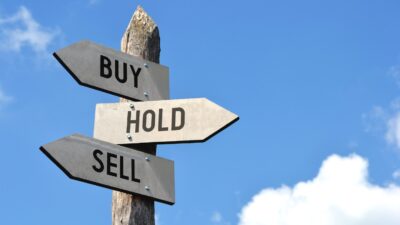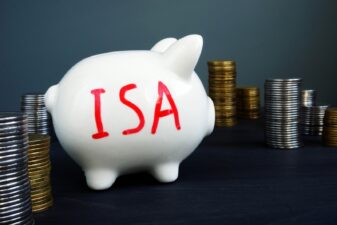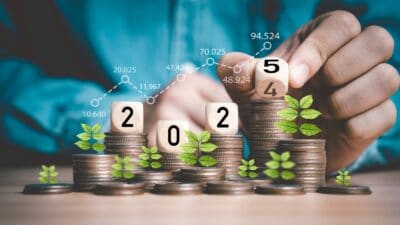‘Buy low; sell high’. That’s the old stock market adage, and it’s what many stock market investors aspire to.
But – crucially – not all stock market investors. Because many investors – including me – aim to be ‘long-term buy-and-hold’ investors.
And not just because they’re following Warren Buffett’s maxim about the ideal holding period for a first-class business being forever, but because they are income investors, holding a share for the regular – and growing – dividends that it throws off.
Put another way, provided that a share meets my income criteria, I have very little interest in selling it – even if a rising share price offers an opportunity to switch the capital into a higher-yielding share.
Low share price = high yield
But if the ‘sell high’ part of that old adage isn’t applicable, the ‘buy low’ part most definitely is.
And that’s because the lower the price that I pay for a given share, the higher the yield.
In other words, if a share costs 100p and offers a 5p dividend, then that’s a 5% yield. If the share price drops to 50p, but the dividend remains unchanged, then that’s a 10% yield.
And the yield offered by individual shares does move around considerably over time. Moreover, so too does the yield offered by the market as a whole.
Put another way, there are times when the market offers income investors an opportunity to lock in a higher income, and times when it offers a lower income.
Should you invest £1,000 in Compass Group Plc right now?
When investing expert Mark Rogers has a stock tip, it can pay to listen. After all, the flagship Motley Fool Share Advisor newsletter he has run for nearly a decade has provided thousands of paying members with top stock recommendations from the UK and US markets. And right now, Mark thinks there are 6 standout stocks that investors should consider buying. Want to see if Compass Group Plc made the list?
Surprisingly variable
I’ve written before about how I took advantage of the market’s fall in January and February to make some purchases when the FTSE 100 fell to 5,500 or so (for reference, it’s now above 7,000).
Take a look at the chart below, which shows the yield of the FTSE 100 over the last five years. As we see, at the market’s nadir, the yield on offer – the yield you’d have got from a bog-standard low-cost index tracker, for instance – was almost 4.4%. Today, it’s 3.6%.
Put another way, that’s almost 20% less income in a little over six months. Over time, that adds up to an awful lot less income – yet bizarrely, today’s higher FTSE level indicates that investors are happier to buy today than they were back then.

Source: The Financial Times
And, of course, the yield on offer from individual shares was much, much higher. I bought engineering firm Weir, for instance, at 777p – a yield of 5.5%. At today’s price of 1,765p, that yield has fallen to 2.4%.
Steadily climbing ‘bought yields’
And this is the income investor’s strategy, of course: to take advantage of market falls to buy temporarily high-yielding decent businesses.
Better still, as those companies grow and prosper, that initial high yield in ‘bought cost’ terms continues to rise as the dividend increases.
In ‘bought cost’ terms, for instance, my stake in AstraZeneca, purchased in 2011, is now yielding 6.9%. BAE Systems, bought in 2010, 6.6%. GlaxoSmithKline, bought in 2007, 6.3%. And so on, and so on.
Moreover, as I’ve said, each year that the dividend rises, those initial ‘bought cost’ yields continue to climb.
Mental gear shift
What to do about this? It’s the old familiar quandary: those points at which yield is highest are precisely those same points where fear, uncertainty and doubt are also at their peak.
Nevertheless, I think there are some practical steps many investors can take:
- Try thinking in yield terms, and not just share price, to help you focus on income rather than capital.
- Monitor yield trends, as in the chart above, and develop a sense of the market’s overall yield.
- Learn to compare an individual share’s yield with the market average, and ask yourself why it is higher or lower.
- Consider holding back investment funds at times of low yields, in order to be able to invest more at times of higher yield.
It’s high for a reason
Even so, always remember that – unlike a bond – a share’s dividend may be cut or suspended at any time.
A month ago, for instance, I bought into insurance group Legal & General on a yield of 7.3%, a level at which the share price indicates that the market has some post-Brexit concerns about the company.
Are those concerns justified? We’ll have to see. But at 7.3%, that was a risk that I was prepared to take.







